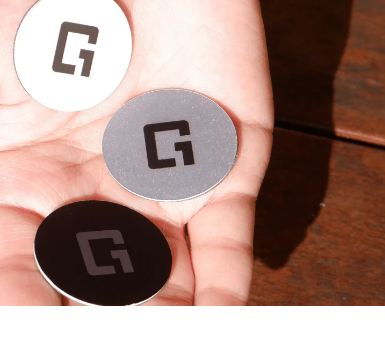
In today’s digital age, the way we exchange contact information is evolving. The traditional paper business card, a tool that has been used for centuries to facilitate professional connections, is being rapidly replaced by digital name cards. This shift is not only a reflection of our increasingly tech-savvy world but also a response to growing concerns about sustainability and efficiency in professional environments. But what exactly is a digital name card and why should you consider switching to one for your networking needs?
What Is a Digital Name Card?
A digital name card is an electronic version of a traditional business card. Instead of carrying around physical cards with your name, job title, phone number, email address, and other details, a digital name card allows you to store and share this information via your smartphone, tablet, or computer. These digital cards can be exchanged through email, QR codes, or apps, and they can include a variety of multimedia elements such as videos, social media links, and clickable websites.
Digital name cards contain the same basic information you’d find on a traditional card, such as your name, position, company, phone number, and email. However, they can also be easily customized to reflect your personal or business brand. Plus, unlike paper cards, digital name cards can be updated in real-time, ensuring that your contacts always have the most up-to-date information.
Benefits of Digital Name Cards
- Convenience and Instant Sharing
One of the biggest advantages of digital name cards is the convenience they offer. In traditional networking, you’d often find yourself fumbling through a stack of paper cards after meetings or events, trying to exchange contact details. With a digital name card, you simply share a link or scan a QR code to exchange your information in an instant. This is particularly useful in situations where time is of the essence, such as at conferences, networking events, or during virtual meetings.
No longer do you need to carry around a stack of paper cards, and you don’t have to worry about running out of cards or losing them. With a digital name card, all your information is stored on your device, and it’s always just a few taps away.
- Sustainability and Environmental Impact
As global awareness of environmental issues grows, many professionals are making an effort to reduce their carbon footprint. Traditional paper business cards contribute to deforestation, waste, and pollution. By switching to a digital name card, you’re eliminating paper waste and promoting a more sustainable approach to networking. Digital cards don’t require printing, packaging, or shipping, making them a far more eco-friendly option.
In addition to being environmentally responsible, using a digital card reflects a modern, forward-thinking image. It shows that you are conscious of sustainability, which can enhance your professional brand.
- Cost-Effective
Printing traditional business cards can be costly, especially if you frequently update your contact details, branding, or logo. In some cases, the cost of printing and distributing paper business cards can add up over time. With digital name cards, there are no printing or reprinting costs involved. Once you create your digital card, you can share it as many times as you like without incurring any additional expenses.
Many digital name card platforms offer free basic versions, and paid options often come with advanced features like design customization, analytics, or integrations with other tools. Whether you choose a free or premium option, a digital name card is typically a more affordable long-term solution than paper cards.
- Always Up-to-Date
One of the drawbacks of traditional business cards is that once they’re printed, your contact information is locked in place. If you change your phone number, email address, or job title, you have to reorder your cards, which can be both time-consuming and expensive. With digital name cards, however, you can update your information in real-time.
For example, if you change your phone number or get a new job, you can edit your digital card on the fly. As soon as the change is made, anyone who has your digital name card will automatically have access to your most current contact information. This ensures that your professional connections never miss an update and always have your accurate details on hand.
- Customization and Interactivity
Digital name cards offer far more flexibility in terms of design and interactivity than paper cards. While traditional cards are limited to text and images, digital cards can include dynamic elements such as clickable links, social media profiles, portfolio samples, video introductions, and even online booking options.
You can customize the design to suit your personal or business brand by adding logos, colors, and fonts that match your professional image. With the ability to add multimedia content, your digital card can become a more engaging tool for sharing your expertise and services. This can make you stand out in a competitive market and leave a lasting impression on potential clients or employers.
- Analytics and Tracking
Another major advantage of digital name cards is the ability to track and measure their effectiveness. Many digital card platforms provide analytics tools that show how often your card has been viewed, clicked, or shared. This data can be incredibly valuable for professionals looking to optimize their networking strategies. For instance, if you’re a salesperson, you can track how many leads you’ve generated or which connections are most engaged with your card.
This real-time feedback allows you to refine your networking tactics and determine which methods are most effective for reaching your target audience.
How to Create a Digital Name Card
Creating a digital name card is simple, and there are numerous platforms available to help you get started. Some popular options include HiHello, Blinq, and CamCard. Most of these platforms offer easy-to-use templates that allow you to input your details, choose a design, and customize your card to match your style.
- Select a Platform: Choose a digital name card service that aligns with your needs and budget. Many platforms offer free basic plans with essential features and premium plans with additional functionality.
- Enter Your Information: Fill in your contact details, including your name, job title, company, and social media links. You can also add a photo, logo, or video introduction if desired.
- Customize the Design: Choose a template or design that represents your personal or business brand. Most platforms allow you to change fonts, colors, and logos to create a unique look.
- Share Your Card: Once your digital card is ready, you can share it instantly via email, messaging apps, or QR code. Some platforms also offer NFC (Near Field Communication) capabilities, allowing for one-tap sharing.
- Keep It Updated: Remember to keep your digital name card updated as your contact information changes. This ensures that your connections always have your latest details.
Conclusion: Embrace the Digital Revolution in Networking
In a world that is becoming increasingly digital, digital name cards are the way of the future. They offer a range of benefits, from cost savings and environmental sustainability to customization and real-time updates. Whether you’re an entrepreneur, freelancer, or corporate professional, adopting a digital name card is a smart move for anyone looking to network more efficiently and effectively.
By embracing digital name cards, you’ll not only stay ahead of the curve in modern networking but also present yourself as a professional who is tech-savvy, sustainable, and forward-thinking. As the world continues to move towards digital-first solutions, the digital name card is poised to become an essential tool in every professional’s networking toolkit.



